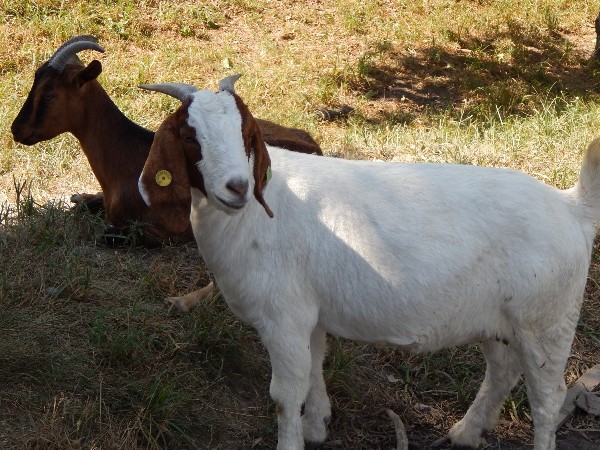

Goat fattening is nothing but “intensive feeding of goats in feedlots to slaughter weight with adequate fat deposit (finish)”. More goat farmers are showing interest in this as it generates quick income.
Advantages Goat Fattening
Goat fattening is simple process and can be achieved within the capabilities of small farmers to implement
The results of goat fattening are highly visible can be realized within a short period of time
Goat fattening generates quick cash for goat farmers
Goat fattening is profitable because of the value/kg (weight) of goat live weight increases as both weight and condition increase
Goat fattening is easily manageable without putting much effort
There are two types of fattening systems are popular.
Traditional fattening system:
In this system, natural or planted pastures with variable degrees of supplementation is provided. Usually, goats require long period of time to gain market weight (slaughter) and condition. In this system, goats often experience large fluctuations in weight gains & conditions as feed availability is not stable. In traditional goat fattening, feeds/fodders are offered in ad-hoc and unregulated fashion. In this system, usually goat farmers feed goats whatever feed/fodder happens to be available at that point in time. This leads to huge feed wastage & growth rates below the genetic potential of the goats. The combination of low growth rates and long fattening periods makes traditional goat fattening system unprofitable.
Agro-industrial Byproduct Based Fattening System:
This system is based on agro-industrial byproducts like ground nut cakes/millet stovers.
Selection of Goat for Fattening:
– Selection of proper quality goats is very important if you are planning for goat fattening.
– Select goats that are healthy without any physical defects
– Select goats with medium body condition scores of 2.0 to 2.5
– Avoid emaciated (thin or weak, due to illness or a lack of food) goats as they often take a long time to recover
– Selected goats should have a large skeletal frame
– Goat farmers should be aware of castration as it influences the fattening process. The selection of castrated or uncastrated goats depends on the final product desired & market conditions. Generally, castrated goats deposit more fat (gain weight) when compared to uncastrated goats. Generally, uncastrated goats have more muscular growth. However castrated goats have higher demand in the market
– Select goat breeds with the better potential for growth and fattening
– Select goats with weights ranging from 20 to 25 kg for better fattening
– Avoid goats that are too old as they are not suitable for fattening process and no demand in the local market
– It is better to select goats between 2 and 4 years of age for fattening process
 Contact Jaguza Support
Contact Jaguza Support